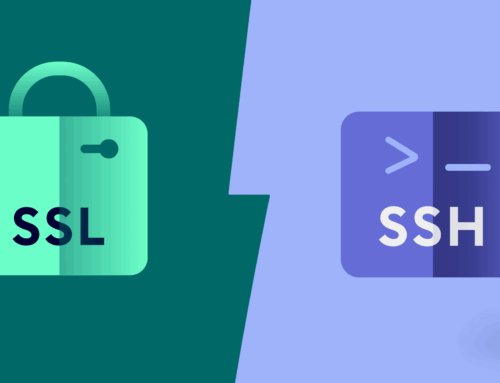
What is Botnet? How it Works, Definition & Types
What is Botnet? How it Works, Definition & Types
A botnet, short for “robot network,” is a collection of internet-connected devices, including computers, servers, mobile devices, and Internet of Things (IoT) devices infected and controlled by a common type of malware.
These devices are often called “bots” or “zombies.” The person controlling the botnet is known as the “bot-herder” or “botmaster.”
While botnets can be used for legitimate purposes, such as managing chatrooms or automating tasks, they are more commonly associated with malicious activities.
Origins and Evolution of Botnets
Initially, botnets were created to automate repetitive tasks and manage online environments like chatrooms.
For example, they could moderate discussions by ejecting users who violated rules. However, as technology advanced, so did the potential for misuse.
Cybercriminals began exploiting botnets for nefarious purposes such as stealing passwords, logging keystrokes, and launching attacks on other networks.
The evolution of botnets has been driven by their potential for financial gain and the prestige they offer within cybercriminal communities. By controlling large numbers of infected devices, criminals can demonstrate their hacking prowess and build reputations.
How Botnets Work

Botnets infect devices with malware that allows the botmaster to control them remotely.
This control is typically exerted through a command and control (C&C) server that issues instructions to the bots. The infected devices can then be used to perform various tasks without the knowledge or consent of their owners.
Botnet Architectures
- Client/Server Model: In this traditional model, a central server is the control hub for all bots. The server communicates directly with each bot to issue commands. While this model is easier to set up and manage, it also presents a single point of failure; if the C&C server is discovered and shut down, the entire botnet can be dismantled.
- Peer-to-Peer (P2P) Model: Unlike the client/server model, P2P botnets do not rely on a central server. Each device in a P2P botnet can act as both a client and a server, sharing information directly with other bots. This decentralized structure makes P2P botnets more resilient and harder to detect or disrupt.
- Hybrid Models: Some botnets use a combination of client/server and P2P architectures to balance ease of control with resilience against takedown efforts.
Types of Botnet Attacks
Botnets are versatile tools in cybercriminals’ arsenal, capable of executing various attacks. Each type of attack leverages the collective power of compromised devices, often called “zombies,” to achieve specific malicious objectives.
Here, we explore several common types of botnet attacks, detailing their characteristics and impact.
1. Distributed Denial-of-Service (DDoS) Attacks
One of the most notorious uses of botnets is to conduct Distributed Denial-of-Service (DDoS) attacks. In these attacks, a botmaster directs thousands or even millions of bots to flood a target server with overwhelming traffic.
The goal is to exhaust the server’s resources, rendering it unable to provide services to legitimate users. This can lead to significant downtime and financial losses for businesses.
DDoS attacks can be particularly challenging to mitigate due to the sheer volume of traffic involved and the attack’s distributed nature, making it difficult to trace back to a single source.
2. Spamming
Botnets are frequently used in spamming campaigns, sending out massive amounts of unsolicited emails. These emails often contain advertisements for illicit products, phishing links, or malware-laden attachments. Using
Spammers can use a botnet to obscure the origin of these emails, making it difficult for recipients and authorities to identify and block them.
Cybercriminals can also rent out spam botnets, providing a lucrative business model for botmasters who control large networks of infected devices.
3. Click Fraud
Click fraud involves using botnets to generate fake clicks on online advertisements.
This fraudulent activity inflates the number of clicks on ads, misleading advertisers into believing their campaigns are more successful than they are. As advertisers typically pay based on click-through rates, click fraud can result in significant financial losses.
Botnets used for click fraud are programmed to mimic human behavior by randomly clicking on ads across various websites, making detection more difficult.
4. Credential Theft
Some botnets are designed to steal sensitive information such as login credentials and personal data.
These botnets deploy keyloggers or other spyware on infected devices to capture keystrokes or take screenshots when users enter sensitive information like passwords or credit card numbers.
The stolen data is then transmitted back to the botmaster, who can use it for identity theft, financial fraud, or selling on underground markets.
5. Cryptojacking
Cryptojacking is a recent attack where botnets hijack infected devices’ processing power to mine cryptocurrencies like Bitcoin or Monero. This process consumes significant computational resources and can slow down affected devices considerably.
Unlike attacks seeking immediate financial gain or disruption, cryptojacking focuses on long-term resource exploitation without the user’s knowledge.
6. Spyware and Ad Fraud
Botnets can also deploy spyware that automatically clicks on online ads or visits certain websites to generate fraudulent ad revenue.
This attack defrauds advertisers and skews web analytics data, affecting marketing strategies and budgets.
7. Dial-up Bots
Although dial-up bots are less common today due to the decline in internet usage, they once exploited modems by forcing them to dial premium-rate phone numbers.
This resulted in inflated phone bills for victims while generating revenue for attackers.
8. Web Crawling
Web crawling botnets mimic legitimate web crawlers used by search engines but with malicious intent.
These bots systematically browse websites to scrape content or gather information for purposes such as competitive intelligence or launching further attacks based on the collected data.
How to Protect Against Botnets
Preventing botnet infections requires a combination of good cybersecurity practices:
- Use Strong Passwords: Protect all devices with strong, unique passwords. Avoid using default passwords provided by manufacturers.
- Install Antivirus Software: Effective antivirus solutions can detect and remove malware before it turns your device into part of a botnet.
- Regular Software Updates: Keep operating systems and applications updated to patch vulnerabilities that malware could exploit.
- Be Cautious with Email Attachments and Links: Avoid clicking on suspicious links or downloading attachments from unknown sources.
- Network Monitoring: Implement network monitoring tools to detect unusual traffic patterns that may indicate a botnet infection.
- Firewalls and Intrusion Detection Systems: Use firewalls and intrusion detection systems to block unauthorized access and alert you to potential threats.
Disabling Botnets
Taking down an active botnet involves multiple strategies:
- Disabling Control Centers: Identifying and shutting down C&C servers can effectively dismantle centralized botnets.
- Cleaning Infected Devices: Removing malware from individual devices through antivirus scans or system resets helps reduce the botnet’s size.
- Legal Actions: Coordinating with law enforcement agencies can lead to the arrest of botmasters and the seizure of their infrastructure.
Botnets are a significant threat in today’s digital landscape because they can harness many compromised devices for malicious purposes.
Understanding how they operate and implementing robust cybersecurity measures are crucial to protecting networks from these threats. As technology continues to evolve, so will cybercriminals’ tactics, making ongoing vigilance essential in the fight against botnets.





